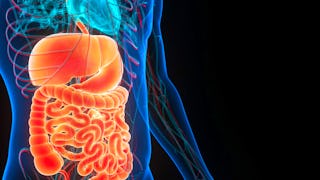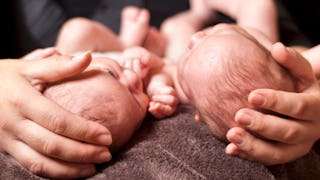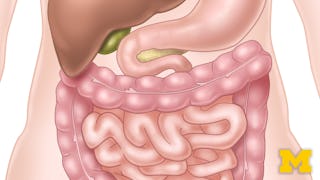Do you have questions about sex hormones or menstrual cycles? This is a crash-course in human reproductive health through fact and biology-based information on a variety of topics. "Sex 101" will cover reproductive anatomy, key biological changes during puberty, sexual biology and contraceptive methods, reproductive disorders, and a special introduction to the exciting field of Oncofertility. Specific lecture titles are as follows: 1) Reproductive Anatomy & Hormones, 2) Menstrual Cycle, Oocyte Maturation, & Sperm Activation, 3) Sexual Biology, Fertilization, & Contraception, and 4) Reproductive Health & Disorders.

Ends tomorrow: Get a Black Friday boost with $160 off 10,000+ programs. Save now.


Introduction to Reproduction

Instructor: Teresa K. Woodruff, Ph.D.
31,555 already enrolled
Included with
(545 reviews)
Skills you'll gain
Details to know

Add to your LinkedIn profile
8 assignments
See how employees at top companies are mastering in-demand skills

There are 4 modules in this course
This module focuses on learning, identifying, and labeling all parts of male and female reproductive anatomy and the function of hormones on development. COURSE GOAL 1: Students will be able to label and analyze the basic functionality of all parts of male and female reproductive anatomy, conceptualize the role of hormones in the interactions between the brain, pituitary, and reproductive tract, and examine the basic functionality of the hormones involved during development and puberty.
What's included
6 videos18 readings1 assignment
This module articulates the hormonal implications of the menstruation cycle and sperm activation as it relates to both reproductive health and overall health. COURSE GOAL 2: Students will be able to conceptualize the hormonal implications of the menstruation cycle, oocyte maturation, and sperm activation as it relates to both reproductive health and overall health, analyze how the hormones of the pituitary relate to target tissues, examine the mechanisms behind oocyte maturation and meiosis, and illustrate how sperm development leads to modal function.
What's included
5 videos13 readings1 assignment
This module outlines the scientific foundations of contraception beyond social norms. COURSE GOAL 3: Students will be able to classify the scientific foundations of male and female sexual biology and contrast differing contraception options through the lens of reproductive function and beyond social norms.
What's included
4 videos15 readings1 assignment
This module spotlights the possibility of infertility in the human body and provides an in-depth understanding upon the biology behind infertility, endometriosis, reproductive diseases, and oncofertility. COURSE GOAL 4: Students will be able to identify the possible causes of infertility in the human body, analyze the effects of reproductive tract disorders, recognize the risks and symptoms of sexually transmitted diseases, and discuss the field of oncofertility in relation to sexual and holistic health.
What's included
6 videos15 readings5 assignments
Instructor

Offered by
Explore more from Basic Science
 Status: Free Trial
Status: Free Trial Status: Free Trial
Status: Free TrialRice University
 Status: Preview
Status: PreviewHebrew University of Jerusalem
 Status: Free Trial
Status: Free TrialUniversity of Michigan
Why people choose Coursera for their career




Learner reviews
545 reviews
- 5 stars
76.13%
- 4 stars
17.30%
- 3 stars
5.28%
- 2 stars
0.72%
- 1 star
0.54%
Showing 3 of 545
Reviewed on May 30, 2016
I really liked the availability to read through notes and word for word of what the videos were talking about. I like the use of pictures as well!
Reviewed on Aug 9, 2016
It's a good course. Provides some very important information about reproductive health. Young adolescent men and women should take this course before beginning their sexual life.
Reviewed on Jan 5, 2020
The online course was good. I got my basics clear with much clarity.

Open new doors with Coursera Plus
Unlimited access to 10,000+ world-class courses, hands-on projects, and job-ready certificate programs - all included in your subscription
Advance your career with an online degree
Earn a degree from world-class universities - 100% online
Join over 3,400 global companies that choose Coursera for Business
Upskill your employees to excel in the digital economy
Frequently asked questions
To access the course materials, assignments and to earn a Certificate, you will need to purchase the Certificate experience when you enroll in a course. You can try a Free Trial instead, or apply for Financial Aid. The course may offer 'Full Course, No Certificate' instead. This option lets you see all course materials, submit required assessments, and get a final grade. This also means that you will not be able to purchase a Certificate experience.
When you purchase a Certificate you get access to all course materials, including graded assignments. Upon completing the course, your electronic Certificate will be added to your Accomplishments page - from there, you can print your Certificate or add it to your LinkedIn profile.
Yes. In select learning programs, you can apply for financial aid or a scholarship if you can’t afford the enrollment fee. If fin aid or scholarship is available for your learning program selection, you’ll find a link to apply on the description page.
More questions
Financial aid available,

